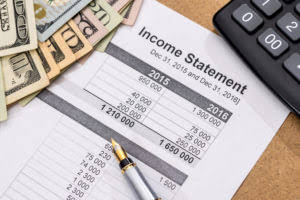
Deferred revenue is typically reported as a current liability on a company’s balance sheet because prepayment terms are typically for 12 months or less. If numbers and accounts aren’t your forte, dealing with accounting concepts like unearned revenue can be challenging. It’s hard to know exactly where and how to list income on your financial statements, how to record revenue and when to make adjustments.
Unearned Revenue: What It Is, How It Is Recorded and Reported
It’s the preferred accounting method for many small businesses and solopreneurs. The early receipt of cash flow can be used for any number of activities, such as paying interest on debt and purchasing more inventory. For items like these, a customer pays outright before the revenue-producing event occurs. This can be anything from a 30-year mortgage on an office building to the bills you need to pay in the next 30 days.

Income statement
- Deferred revenues refer to money received for goods or services to be provided to customers later, whereas deferred expenses refer to money expended for obligations not yet observed.
- Unearned revenue can be rent payments that are received in advance, prepayments received for newspaper subscriptions, annual prepayments received for the use of software, and prepaid insurance.
- Your cash flow statement records cash coming into your business, whether earned or unearned.
- Unearned revenue, also known as deferred revenue or prepaid revenue, refers to the payments received by a company for goods or services that are yet to be delivered or provided.
- Sales revenue is the income generated by the sale of services and/or products.
- Unearned revenue is any payment made in advance, for example, retainers for ongoing services, annual subscriptions, vouchers, gift cards or prepaid rent.
Unearned revenue or deferred revenue is considered a liability in a business, as it is a debt owed to customers. It is classified as a current liability until the goods or services have been delivered to the customer, after which it must be converted into revenue. Unearned revenue refers to the money small businesses collect from customers is unearned revenue a current liability for a or service that has not yet been provided. In simple terms, unearned revenue is the prepaid revenue from a customer to a business for goods or services that will be supplied in the future. However, a business owner must ensure the timely delivery of products to its consumers to keep transactions steady and drive customer retention.

What is the difference between unearned revenue and accounts receivable?
A publishing company may offer a yearly subscription of monthly issues for $120. This means the business earns $10 per issue each month ($120 divided by 12 months). Unearned revenue is a liability for the recipient of the payment, so the initial entry is a debit to the cash account and a credit to the unearned revenue account. As a company earns the revenue, it reduces the balance in the unearned revenue account (with a debit) and increases the balance in the revenue account (with a credit). The unearned revenue account is usually classified as a current liability on the balance sheet.
By making this journal entry, the company recognizes $6,000 of the prepayment as earned revenue and decreases the unearned revenue account by the same amount. Each contract can stipulate different terms, whereby it’s possible that no revenue can be recorded until all of the services or products have been delivered. In other words, the payments collected from the customer would remain in deferred revenue until the customer has received what was due according to the contract. Once the business actually provides the goods or services, an adjusting entry is made. The unearned revenue account will be debited and the service revenues account will be credited the same amount, according to Accounting Coach. This means that the cash isn’t received in the current period, but it’s expected to be received in later periods as services are provided or products are delivered.
Your cash flow statement records cash coming into your business, whether earned or unearned. Unearned revenue should be listed as a credit in the operating activities section of your cash flow statement. Unearned revenue is any payment made in advance, for example, retainers for ongoing services, annual subscriptions, vouchers, gift cards or prepaid rent.

What Is Unearned Revenue vs. Deferred Revenue?
- This is done because the company has received payment for a product or service which has not yet been delivered or performed.
- Clear disclosure helps ensure transparency and accurate financial reporting for investors and other stakeholders.
- The accounting period were the revenue is actually earned will then be understated in terms of profit.
- Funds in an unearned revenue account are classified as a current liability – in other words, a debt owed by a business to a customer.
- First, since you have received cash from your clients, it appears as part of the cash and cash equivalents, which is an asset.
Why Is Deferred Revenue a Liability?

